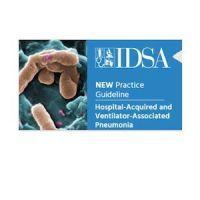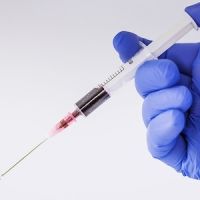An interdisciplinary team of researchers at UC San Diego have developed a test to find out if bacteria are susceptible to antibiotics, with results available in just a few hours. They hope that this advance could slow the appearance of drug resistance and allow appropriate treatment for patients with life threatening bacterial infections to be identified faster.
The team at UC San Diego included infectious disease specialists in the School of Medicine, Victor Nizet, MD, and George Sakoulas, MD; two biologists in the Division of Biological Sciences, Kit and Joe Pogliano; and Diana Quach, a bioengineering graduate student.
Their paper, published online in EBioMedicine, outlines the method the researchers developed to test whether bacteria are treatable with traditional antibiotics or are drug resistant and need to be treated with newer antibiotics. The hope is that this approach will slow the emergence of resistant bacteria by limiting the newest drugs for the infections they are most needed for.
See Also: New Antibiotics Group Shows Promise Against Staph, MRSA
The team had previously developed a microscopy-based method that performs an autopsy on bacterial cells that shows how each cell died. They showed that this method can identify new antibiotics and help understand how these antibiotics work.
Kit Pogliano, a professor of biology at UC San Diego who headed the research team, said: "We tested to see if this method could be applied to antibiotic susceptibility testing. Surprisingly, we not only found that our method was able to accurately differentiate sensitive S. aureus strains from resistant MRSA strains, but that we were able to identify two subgroups of MRSA strains, one of which is susceptible to combinations of antibiotics that could be used in the hospital. We are excited by the accuracy and speed of this test, as well as by its unanticipated ability to identify these two types of MRSA infections, which would have been missed by other tests."
The advantages of examining single cells are its speed and the fact that this method does not rely on having any detailed understanding of the bacterium causing the infection, or of the genes that convey resistance, say the research team. As resistance to the drugs used to treat MRSA infections arises by several evolutionary pathways via different combinations of mutations, it could also provide rapid treatment information for newly emerging bacterial pathogens, such as that which caused the infections transmitted by endoscopes.
"When we combine careful culture conditions, cutting edge imaging methods and a detailed quantitative analysis, we can turn this simple approach into a reliable test," said Joe Pogliano, a professor of biology.
The researchers say their new method, which is being commercialised, has the potential to be applied to many different types of bacteria. "Our new method worked surprising well at rapidly detecting antibiotic resistant strains of S. aureus," said Diana Quach, a graduate student and lead author on the study. "We are now optimising it to provide a more accurate test for other types of antibiotic resistant bacteria, such as Pseudomonas aeruginosa."
Source: UC San Diego
Image credit: Wikimedia Commons
The team at UC San Diego included infectious disease specialists in the School of Medicine, Victor Nizet, MD, and George Sakoulas, MD; two biologists in the Division of Biological Sciences, Kit and Joe Pogliano; and Diana Quach, a bioengineering graduate student.
Their paper, published online in EBioMedicine, outlines the method the researchers developed to test whether bacteria are treatable with traditional antibiotics or are drug resistant and need to be treated with newer antibiotics. The hope is that this approach will slow the emergence of resistant bacteria by limiting the newest drugs for the infections they are most needed for.
See Also: New Antibiotics Group Shows Promise Against Staph, MRSA
The team had previously developed a microscopy-based method that performs an autopsy on bacterial cells that shows how each cell died. They showed that this method can identify new antibiotics and help understand how these antibiotics work.
Kit Pogliano, a professor of biology at UC San Diego who headed the research team, said: "We tested to see if this method could be applied to antibiotic susceptibility testing. Surprisingly, we not only found that our method was able to accurately differentiate sensitive S. aureus strains from resistant MRSA strains, but that we were able to identify two subgroups of MRSA strains, one of which is susceptible to combinations of antibiotics that could be used in the hospital. We are excited by the accuracy and speed of this test, as well as by its unanticipated ability to identify these two types of MRSA infections, which would have been missed by other tests."
The advantages of examining single cells are its speed and the fact that this method does not rely on having any detailed understanding of the bacterium causing the infection, or of the genes that convey resistance, say the research team. As resistance to the drugs used to treat MRSA infections arises by several evolutionary pathways via different combinations of mutations, it could also provide rapid treatment information for newly emerging bacterial pathogens, such as that which caused the infections transmitted by endoscopes.
"When we combine careful culture conditions, cutting edge imaging methods and a detailed quantitative analysis, we can turn this simple approach into a reliable test," said Joe Pogliano, a professor of biology.
The researchers say their new method, which is being commercialised, has the potential to be applied to many different types of bacteria. "Our new method worked surprising well at rapidly detecting antibiotic resistant strains of S. aureus," said Diana Quach, a graduate student and lead author on the study. "We are now optimising it to provide a more accurate test for other types of antibiotic resistant bacteria, such as Pseudomonas aeruginosa."
Source: UC San Diego
Image credit: Wikimedia Commons
References:
Quach DT, Sakoulas G, Nixet V, Pogliano J, Pogliano K (2016) Bacterial cytological profiling (BCP) as a rapid and accurate antimicrobial susceptibility sesting method for staphylococcus aureus. DOI: http://dx.doi.org/10.1016/j.ebiom.2016.01.020
Latest Articles
Staph, Antibiotics, Test
An interdisciplinary team of researchers at UC San Diego have developed a test to find out if bacteria are susceptible to antibiotics that gives results in just a few hours. They hope that this advance could slow the appearance of drug resistance and allo



























